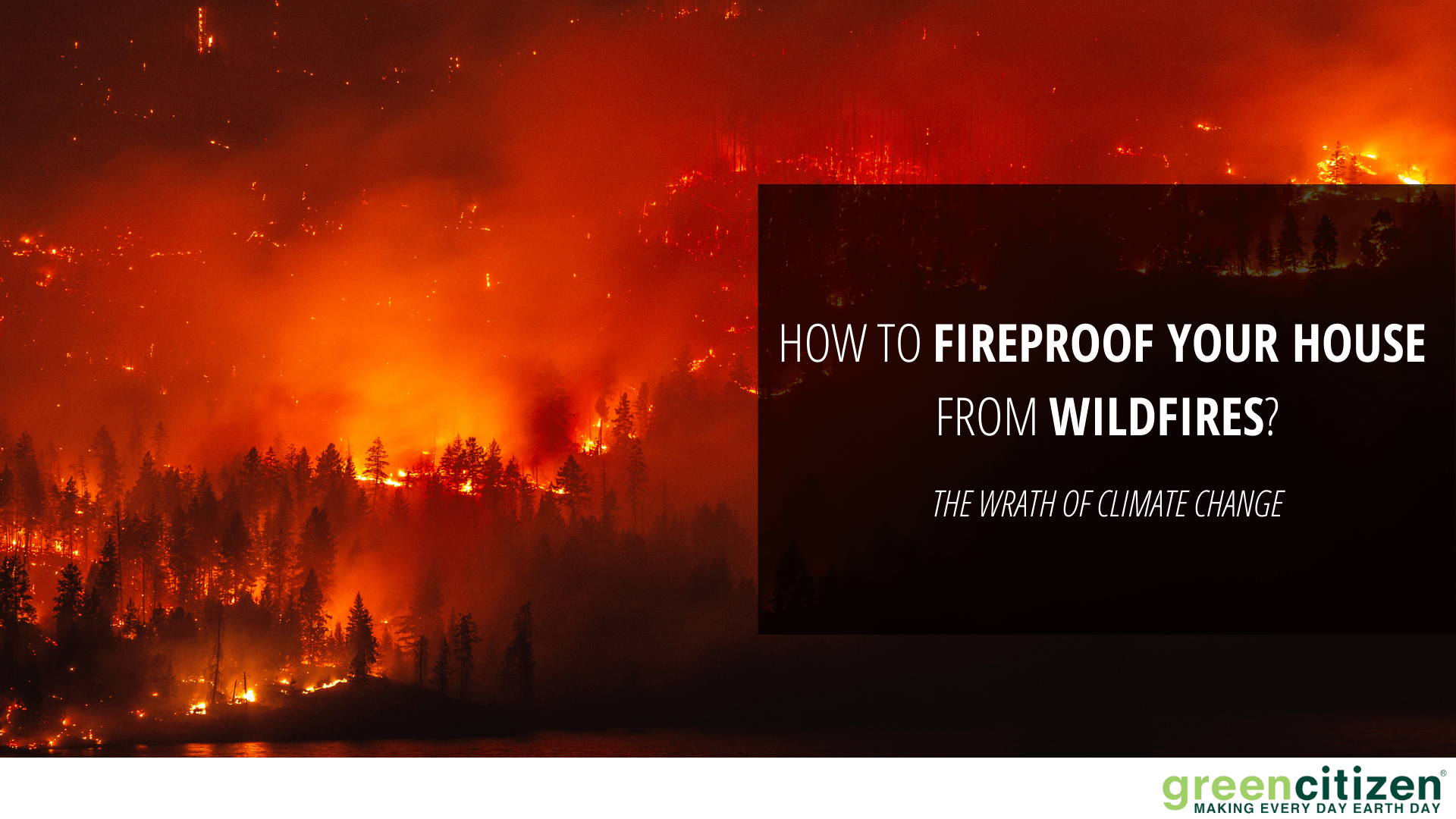As thousands of residents of California struggle for yet another record year of wildfires, it has gone beyond being able to live in the hope that things will get better.
Not only are these fires becoming more regular, but they are burning with much greater ferocity thanks to droughts that have dried out vast areas of California.
And while it’s everybody’s duty to take action against climate change, we simply don’t know when things will improve.
One way to protect your home, your family, and yourself is to create a fire-resistant home.
And that’s what I’m going to show you how to fireproof your house in this article.
The Most Devastating California Wildfires in Recent Years
Wildfires of 2021
Both the frequency and scale of wildfires have gone up in the recent years. Not only in California but also we’re seeing devastating wildfire incidents in the Oregon (Bootleg, Cougar Peak, Smith, Big Hamlin) and Washington (Schneider Springs, Green Ridge, Twintyfive Mile). Even parts of Idaho (Boundary, Scarface, Rush Creek) and Montana (Trail Creek, Alder Creek, Throne Creek) are suffering.
In 2021 (as of September 12) alone, there have been a total of 7,377 wildfire incidents in the USA. Among them, 35 are major (burning more than 1,000 acres) incidents.
So far, the Dixie, Caldor, and Monument are the most devastating ones. All of the three wildfires are still active. The alarming news is that they’ve found their place in the list of 20 largest wildfires in California.
If we look at historical data, we find that there are three particular regions in the Northern California that suffer the most. These are —
- Butte, Plumas, and Lassen counties
- Mendocino,Trinity, and Tehama counties
- Napa, Sonoma, and Lake counties
Apart from these regions, Shasta, Eldorado, Amador, Santa Clara, Alameda, and Fresno are quite vulnerable.
The presence of forestland is a major reason why these regions are prone to wildfires.
2020 — The Year of Wildfires
In August 2020, all hell broke down in the Northern California. We witnessed four catastrophic wildfires burning the region for months. There were —
- August Complex Fire
- North Complex Fires
- LNU Lightning Complex Fires
- SCU Lightning Complex Fires
The North Complex Fire burned parts of Butte and Plumas Counties for over four months. While the North Complex fire ravaged Butte county again, the LNU Lightning Complex fires Lake, Napa, Sonoma, Solano, and Yolo Counties. Both of these two fires originated from lightning strikes on the same day.
But wait, there’s more!
Last year’s lightning strikes also caused the SCU (Santa Clara Unit) Lightning Complex fires. Santa Clara, Alameda, Contra Costa, San Joaquin, Merced, and Stanislaus counties struggled with 47 days of hell. The SCU Lightning Complex fires burned almost 400,000 acres of land, making it the fourth-largest wildfire in the history of California.
If that was the fourth-largest wildfire, which is the largest one?
It’s the August Complex!
This massive wildfire affected the Coast Range of Northern California, particularly Glenn, Lake, Mendocino, Tehama, Trinity, and Shasta Counties. A total of 1,032,648 acres of land burned to ashes.
The Creek (Fresno, Madera) in 2020 was also another major wildfire of last year.
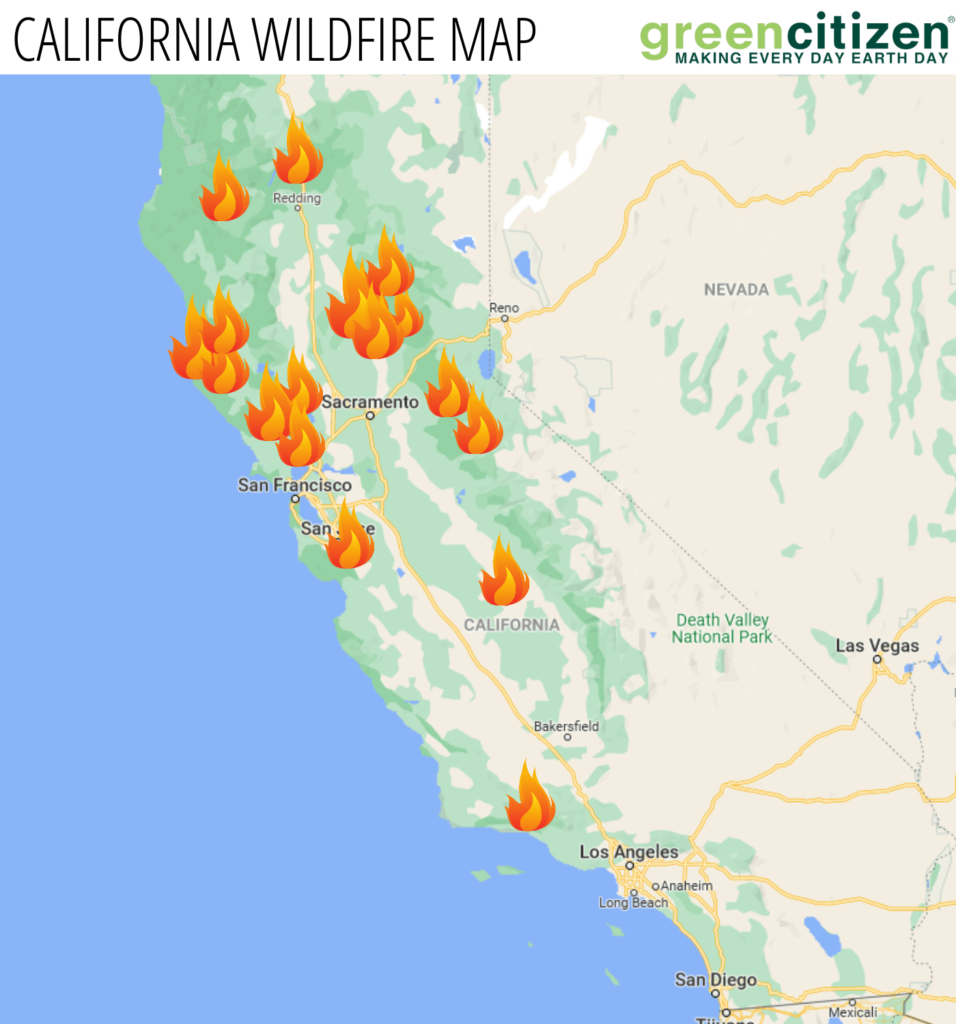
Major Wildfire Incidents of the Last Decade (2010 – 2019)
The infamous 2018 Camp Fire was the most destructive wildfire in the history of California. This wildfire in Butte County killed 85 people, destroyed almost 19,000 buildings, and burned over 150,000 acres of land.
The Tubbs Fire in 2017 also inflicted heavy losses. This time, the wildfire was burning 18 Northern California counties simultaneously for almost a month! Napa, Sonoma, and Lake counties paid the highest price. The city of Santa Rosa went through hell — all 22 people who lost their lives in this wildfire were from this city.
But the list doesn’t stop here.
Here’s the list of major wildfires of the last decade that I haven’t talk about yet —
- Mendocino Complex (Mendocino, Lake, Colusa, Glenn) in 2018
- Thomas (Ventura, Santa Barbara) in 2017
- Rush (Lassen) in 2012
- Rim (Tuolumne) in 2013
- Carr (Shasta, Trinity) in 2018
- Redwood Valley Complex (Mendocino) in 2017
- Atlas (Napa, Solano) in 2017
Why Is California Prone to Frequent Wildfires?
Both the number and size of wildfires in California are at an all-time record high in the state’s history. And you don’t have to be a resident close to one of these fires to see and smell the impact.
People living in the Bay Area regularly see the sky tinted with clouds of smoke and that unmistakable smell of burning wood.
But what’s at the heart of all these fires?
1. Climate Change
The science behind any fire is simple. You need a flammable material that is also dry. And the dryer the material is, the more combustible and susceptible to even the smallest spark it becomes.
With global climate change driving many decades of drought-like conditions in large parts of California, vast areas of the state are now so dry that plants and trees are dying. And that leaves plenty of dry wood and shrubs to spread, well, like wildfire.
2. Human Errors
Now, even with completely dry material, you need something to ignite the flames. Fires don’t just start on their own.
In some cases, you can blame nature for a lightning strike at the wrong time in the wrong place. Most often, though, human error or malicious intent is to blame for the fires.
In some cases, it’s an illegal campfire. But there have also been severe incidences of fires caused by corporations. Like the energy company Pacific Gas and Electric Company who eventually had to accept liability for the Tubbs fire of 2017.
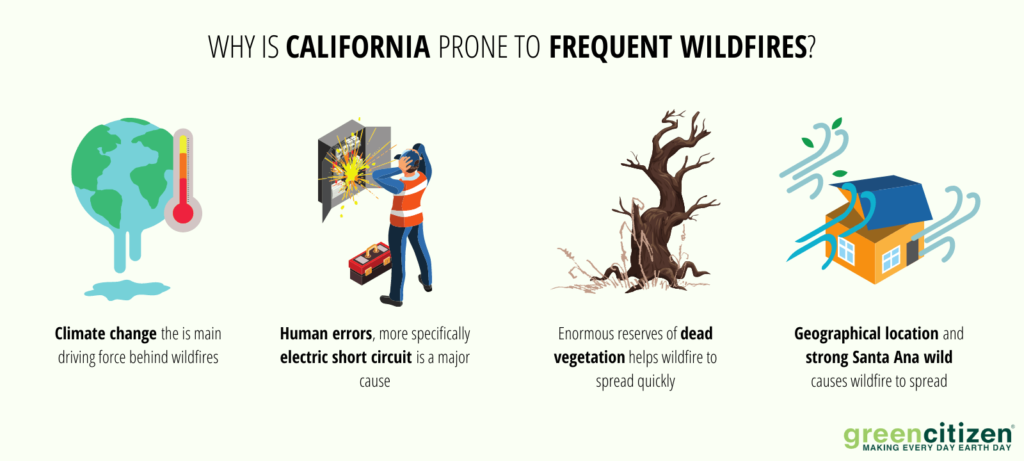
3. Years Of Fire Suppression and Dead Vegetation
This might sound crazy, but let me explain.
For decades, California suppressed every possible fire in the state, and it did so extremely well. The problem is that those actions built up enormous reserves of dead vegetation that became very dry. And that’s what has become a major problem as it provides the ideal starter fuel for wildfires.
All that undergrowth in forests would normally have burnt away every year in small and controllable fires. But now we’re dealing with the effects of those decisions.
4. Strong Winds
And finally, there is the strong Santa Ana wind which has brought increased wildfires in the winter months due to dry air and strong wind blowing in from the Great Basin area starting in October.
Fires at this time of year spread three times faster, and they have been responsible for the vast majority of economic losses. And scientists are now exploring the link between climate change and stronger Santa Ana winds.
That link would complete a vicious circle of all four of these main reasons for wildfires.
How To Retrofit A Fireproof House?
If you’re building a new house completely from the ground up, then you should talk to your architect about designing it completely in a fire-resistant way.
But for most people, it’s going to be a case of figuring out ways to add some fire resistance for added protection.
1. Start With The Roof
Your roof is the most vulnerable part of your house and where most fires spread.
Unfortunately, this could also be the most expensive thing to retrofit. If you have wood shingles, then you’re not going to have much fire resistance at all. Consider replacing them with non-combustible building materials like composite tiles or, if suitable, install a metal roof.
You also need to make sure there is no combustible material under the roof tiles where hot embers could get in.
2. Protect Vents
The second step to a fireproof home is to find all the outside vents in your house and fit them with a metal mesh.
Avoid any fiberglass or plastic covers as these will melt very quickly when the heat builds up outside.
3. Assess Eaves And Soffits
Next, you need to take a close look at eaves and soffit vents. Many older homes have open eaves where heat can build up and concentrate, resulting in the roof catching fire.
To improve a fireproof home, make sure your eaves are properly soffited with fire-resistant materials.
Also, check that the soffit vents are small enough not to allow burning embers in and possibly into the attic.
4. Upgrade Your Windows
First of all, you should have multi-pane tempered glass windows. These will withstand dangerous heat a lot better without shattering and then allowing embers to enter your home.
If you have a lot of landscaping and vegetation close to your house, then also consider installing non-combustible screens or shutters.
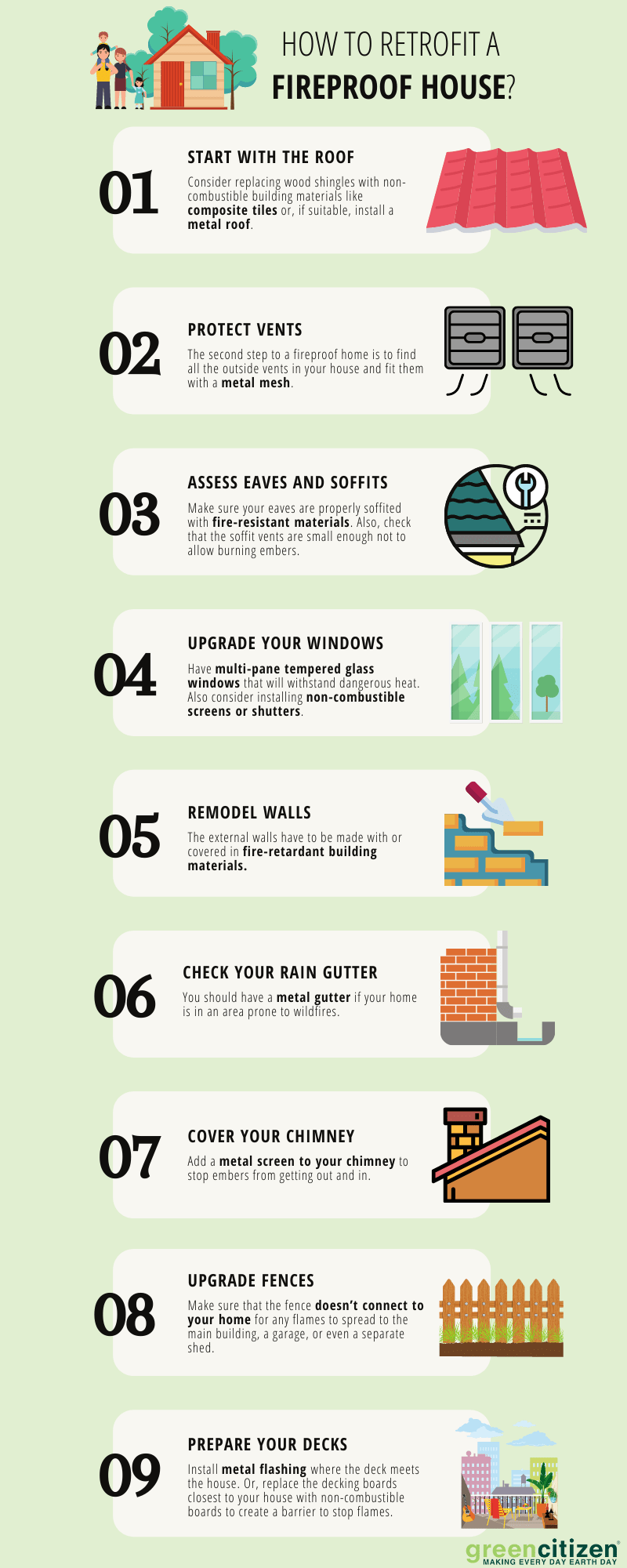
5. Remodel Walls
All of your external walls have to be made with or covered in fire-retardant building materials. That means possibly covering them from the foundation to the roof with stucco fiber, fiber cement, or an approved external insulation and siding material.
In recent years, they are commonly used construction materials, but it’s best for homeowners to make sure in an older building whether there is anything on the walls and siding that could catch fire.
6. Check Your Rain Gutter
Ideally, you should have a metal gutter if your home is in an area prone to wildfires. But it’s also important to keep your gutters completely clear throughout the year.
Leaves and plant debris will completely dry out and very quickly catch fire.
7. Cover Your Chimney
Add a metal screen to your chimney to stop embers from getting out and in. Our landscape has become very dry even in winter months when you might light a stove at night. And that could cause a significant risk of a blaze very close to your home.
8. Upgrade Fences
While it might not be financially possible to replace an entire boundary fence with non-combustible material, that might also not be necessary.
There are two things you can do.
Firstly, make sure that the fence doesn’t connect to your home for any flames to spread to the main building, a garage, or even a separate shed.
Alternatively, replace the last section of a fence that does connect to buildings with fire-resistant materials to reduce the risk of fire spreading.
9. Prepare Your Decks
Replacing decks with fire-resistant materials is generally a good idea, but there are some things you can do with a smaller budget. One option is to install metal flashing where the deck meets the house.
Alternatively, replace the decking boards closest to your house with non-combustible boards to create a barrier to stop flames.
Create Defensible Spaces To Fight Against Wildfire
So, we’ve covered what you need to do to create a fire-resistant home. Now we need to turn to your property surrounding your home to create even more fire safety.
What Is A Defensible Space?
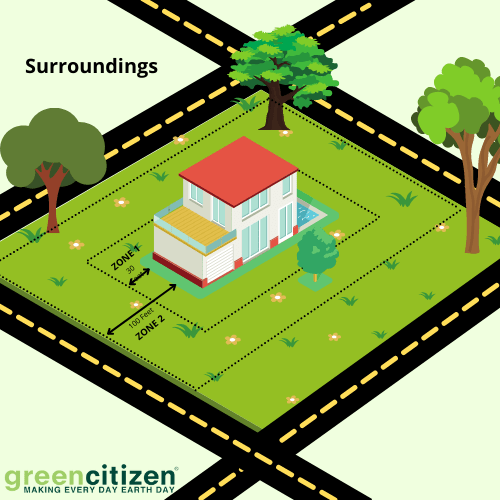
A defensible space is a buffer around your house that you actively manage by staying on top of the landscape under your control.
You can look at this as multiple zones where the closer you get to the main building, the less combustible material there is.
Here’s what that means in practical terms.
In zone 1, you’re looking at everything within 30 feet of your home. This is where you want to have as little vegetation as possible, including lawns.
Zone 2 extends to about 100 feet, and this is where you want to be smart about spacing plants and trees for fire prevention.
But how do you actually do that?
Smart Landscaping
Here are some tips for adding fire protection to your property.
Zone 1:
As tempting as it is to have beautiful plants, flowers, and evergreen shrubs all-around your house, that’s a landscaping plan that can cost you dearly and destroy your home.
Here are some action items:
- Create a gravel, paving, or concrete hardscape edge around your house that is about 3 to 4 feet wide.
- Build a low boundary wall with stone or concrete.
- Trim all branches from trees that come within 30 feet of your home.
- Store all wooden outdoor furniture and planters in a safe place.
- Remove all plants in zone 1 no matter how pretty they are.
- Keep on top of weeds growing in zone 1; they are often attracted to wildfire flames.
- Don't park cars, bikes, trailers, or other vehicles in zone 1.
- Store your trash cans in a shed or garage.
- Clear away any dead leaves and vegetation on a daily basis; all it takes is a few dry leaves.
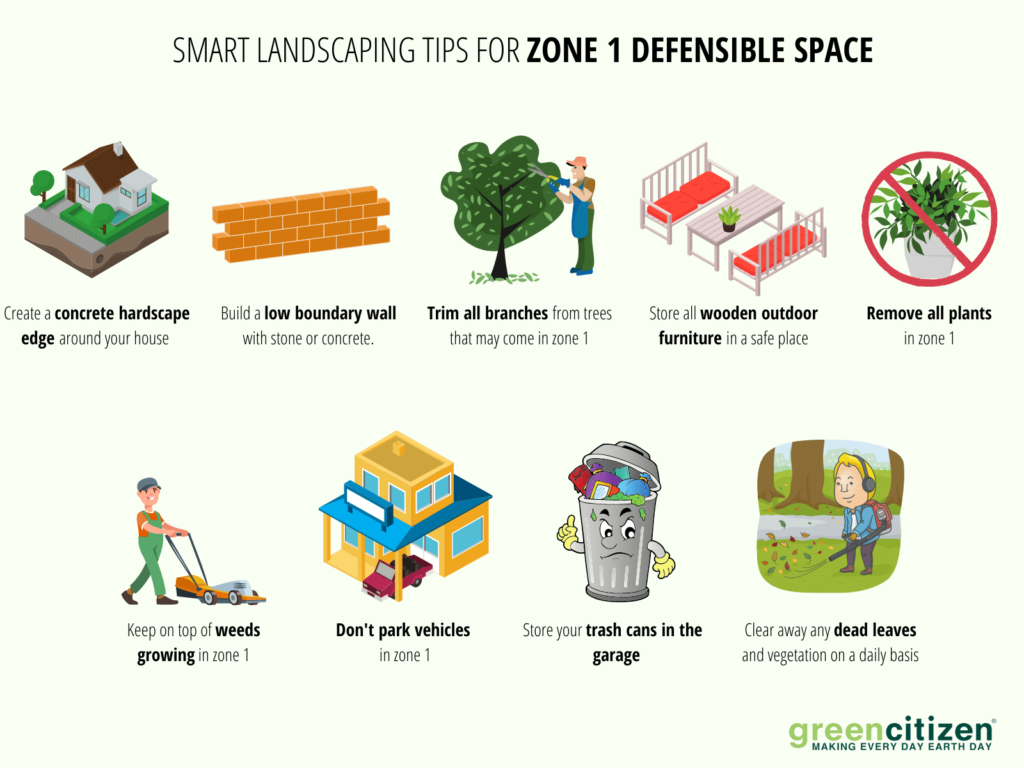
Zone 2:
This is where you need to be particularly smart and assess everything from the ground up to the tops of trees.
- Remove all dead plants from your garden; don’t just pile them up somewhere only to become a huge pyre.
- Clean up fallen leaves and pine needles on a daily basis.
- On level ground, space branches of trees at least 10 feet apart by regularly trimming them.
- If your property has a sloped ground, then keep trees 20 feet apart.
- Store wood and other fuel at least 10 feet away from trees and shrubs; ideally, cover these with non-combustible sheets.
Keep Driveways And Access Clear
You have to make sure that the access to your property is clear during wildfire season so that fire trucks and other emergency vehicles can gain access.
If you live in a residential suburban area, then get together with your neighbors to make sure the main roads in the area are not unnecessarily narrow because of parked cars.
And if you have concrete pillars or an entrance gate, make sure that it’s easy for a large fire truck to get in. You don’t want the fire department to spend valuable minutes trying to navigate a tight space.

Read More:
5 Essential Wildfire Prepping Tips to Follow
At this stage, you have plenty of information to prepare your home and property. Now it’s time for a few business and home safety tips.
1. Build Up Emergency Supplies
Preparing for wildfire season isn’t just about fire safety. Even if you’re not immediately affected by a nearby fire, you could be cut off from your nearest town to get essential supplies.
That’s why it’s important to have a few weeks’ worth of food and water supplies should a fire burn for longer. These should be mainly non-perishable goods, and you need to rotate them on a regular basis.
2. Plan Backup Communication
One of the first things you’re likely to lose is your landline phone and internet connection. But even your cell phone connection can go if your closest towers are destroyed in the fire.
That’s why you should have a two-way battery-powered radio. And encourage the people in other buildings around you to have one as well so that you can support each other and help out when needed.

3. Learn First Aid Skills
Ideally, you should be long gone from your home before there is a risk of it being destroyed. But sometimes, these fires change direction so quickly that you need to move from providing fire safety to providing first aid.
Find a nearby emergency aid course and pay close attention to what skills and materials you need to help someone suffering from burns or smoke inhalation.
4. Create An Evacuation Plan
The first thing you need to do is look at a map of your area and find all the routes to safety. You never know where the fire might be coming from, so you need to be familiar with those roads.
You also need to make a definitive decision about how close you will let a fire get before you evacuate. Mark a definite line on a map and then stick with that.
If or when it comes to the day where a wildfire crosses that line, gather up your loved ones and pets and leave; don’t ever second guess your evacuation plan.
5. Pack An Evacuation Bag
So many people have been caught out by the speed with which wildfires can move. That’s why you have to have all your essentials packed and ready to go at all times.
These things should include passports and other important documents, medication, phones, laptops and tablets, and anything valuable.
Just don’t let that all become five suitcases full of stuff. In an evacuation situation, you want to be able to get in your car within minutes to get to safety.
5 Best Wildfire Preparedness Essentials that Can Save Your Life
1. First Aid Kit

In any emergency, especially during a wildfire, a first aid kit isn’t optional—it’s critical. When the unexpected strikes, you’ll need supplies to treat minor injuries like scrapes, burns, and cuts.
Look for a kit that includes essentials like adhesive bandages, antibiotic ointments, antiseptic wipes, burn creams, pain relievers, gauze, wound closures, and a cold pack. These items can make all the difference in stabilizing minor injuries until help arrives.
Choose a kit that’s comprehensive—more items mean more readiness. After all, wildfires don’t offer second chances.
2. Hard Casing for Your First Aid Kit
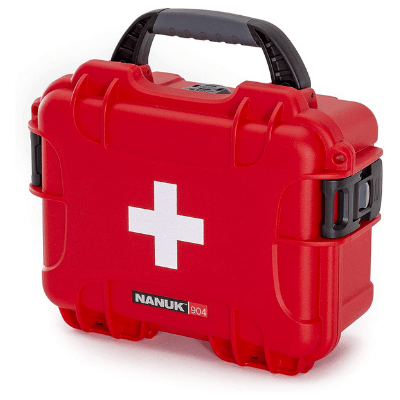
Emergencies are chaotic. Whether you’re dealing with smoke, falling debris, or rushing to evacuate, your first aid kit needs to be as resilient as you are.
A hard case ensures your medical supplies stay safe from water, dust, and impact. Look for one that’s waterproof, dustproof, and shockproof—something rugged enough to withstand the unpredictability of wildfires.
The right casing transforms a first aid kit into a true survival tool, ready for whatever comes your way.
3. Adjustable Head Lamp

Picture this: It’s pitch black, smoke is thick, and you need to navigate your way to safety. A flashlight is useful, but a headlamp? That’s a game-changer.
A headlamp keeps your hands free while illuminating your path, allowing you to carry supplies or assist others. When choosing one, focus on reliability, battery life, and adjustable brightness.
In wildfire situations, visibility saves lives.
4. Emergency Weather AM/FM Radio
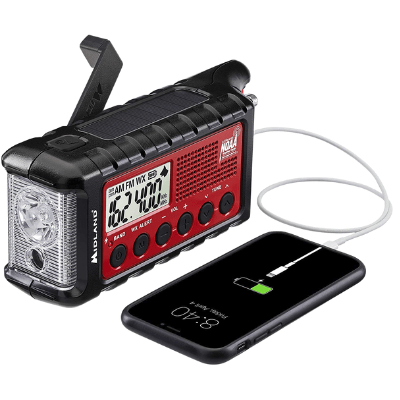
Knowledge is survival during wildfires. Conditions shift fast, and knowing where the danger is—or where to go—can be lifesaving.
An emergency weather radio connects you to NOAA weather alerts, keeping you informed with real-time updates. Prioritize models that offer multiple power sources—hand crank, solar, or battery—so you’re never left in the dark.
Staying informed keeps you ahead of the fire.
5. Fire Blankets

While no match for roaring wildfires, fire blankets offer vital protection in close-contact situations. They can smother small fires or shield your body if you’re caught in a risky spot.
Compact, affordable, and easy to use, fire blankets are a must-have for anyone living in wildfire zones. Stock a few in your emergency kit—you never know when you’ll need that extra layer of defense.
Frequently Asked Questions (FAQ)
Cement, concrete, and bricks can make a house fire resistant. It’s particularly important for roofs and the siding of buildings to be fire-resistant as this is where most buildings catch fire and are destroyed.
Yes, cement and concrete homes offer a lot of fire protection. However, if the siding or roofs contain combustible substances like wood, then fire will still cause a lot of damage.
Yes, houses can be fire resistant with the right materials. Avoiding plastic and wood is the main thing to keep in mind as these will burn quickly.
Yes, a brick house can burn down. In some cases, the only thing left standing are the brick walls, but you can increase fire resistance by avoiding the use of wood and plastic during construction.
A fireproof building is a structure that has passive fire protection that makes it less likely to catch fire. There are some chemical treatments available, but building from the ground up with non-combustible stuff is the best idea.
Take Action For A Fire Resistant Home
Creating a fire-resistant home doesn’t have to cost a fortune. There are plenty of things you can do from the above list to significantly reduce the risk of a catastrophic fire.
Start with your landscaping, and then make some upgrades to the buildings starting with the low-cost items. It’s an investment that could save you a fortune and even your life.
And it’s even possible that insurance companies will provide favorable quotes for homeowners that take proactive steps.
Don’t forget to comment below if you have some additional tips.

